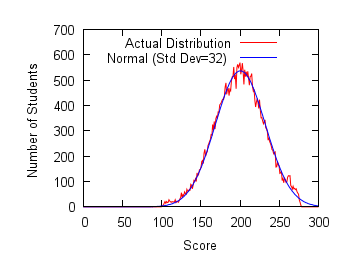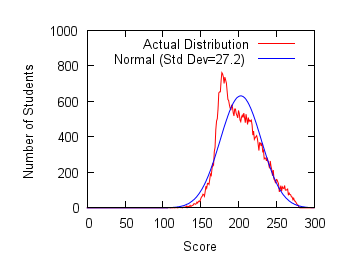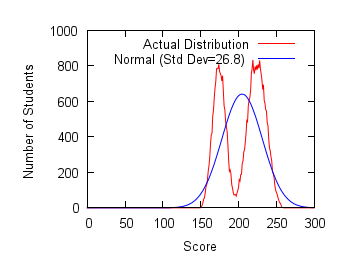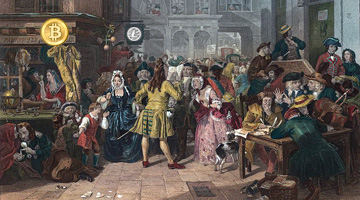|
| |
|
| |
|
|







|
|
TCHS 4O 2000 [4o's nonsense] alvinny [2] - csq - edchong jenming - joseph - law meepok - mingqi - pea pengkian [2] - qwergopot - woof xinghao - zhengyu HCJC 01S60 [understated sixzero] andy - edwin - jack jiaqi - peter - rex serena SAF 21SA khenghui - jiaming - jinrui [2] ritchie - vicknesh - zhenhao Others Lwei [2] - shaowei - website links - Alien Loves Predator BloggerSG Cute Overload! Cyanide and Happiness Daily Bunny Hamleto Hattrick Magic: The Gathering The Onion The Order of the Stick Perry Bible Fellowship PvP Online Soccernet Sluggy Freelance The Students' Sketchpad Talk Rock Talking Cock.com Tom the Dancing Bug Wikipedia Wulffmorgenthaler |
|
bert's blog v1.21 Powered by glolg Programmed with Perl 5.6.1 on Apache/1.3.27 (Red Hat Linux) best viewed at 1024 x 768 resolution on Internet Explorer 6.0+ or Mozilla Firefox 1.5+ entry views: 4872 today's page views: 73 (3 mobile) all-time page views: 3400792 most viewed entry: 18739 views most commented entry: 14 comments number of entries: 1228 page created Sun Jul 13, 2025 03:01:49 |
|
- tagcloud - academics [70] art [8] changelog [49] current events [36] cute stuff [12] gaming [11] music [8] outings [16] philosophy [10] poetry [4] programming [15] rants [5] reviews [8] sport [37] travel [19] work [3] miscellaneous [75] |
|
- category tags - academics art changelog current events cute stuff gaming miscellaneous music outings philosophy poetry programming rants reviews sport travel work tags in total: 386 |

| ||
|
Plenty of happenings in the past couple of weeks - got my spectacles fixed (ok, changed), fellow student graduated (when will it be my turn... ok, my fault), classmate's baby's first month (no squishing, sadly), the lab door finally closes fully after generous application of WD-40, and my cousin held his wedding ceremony, with me as backup-backup emcee. Fortunately, it only went to the backup. Big news first, and they don't come much bigger than Alizée strutting her stuff in the French version of Dancing With The Stars. All is right with the world again. [On Youtube (no embed)] That move at 0:34 seems familiar... Vagabond's also back after a long hiatus, with the current arc being about Musashi's finding himself as a farmer. Inoue Takehiko's inks are, as always, top notch, as he manages to bring out the unprepossessing yet timeless struggles of humble peasants brilliantly. Side comment: two (or three) swords does not necessarily beat one, Niten Ichi aside. Local happenings next. So, it looks like we're America's little regional spy buddies, something our good neighbours aren't thrilled about. The relevant minister is keeping his lips sealed, but I gather that nobody was that surprised. Actually, one wonders why they even bothered, given that the NSA has been tapping Google and Yahoo directly in the old-fashioned way, and have thereby probably seen what cannot be unseen. Might be why nobody's protesting too hard, what with China beginning to throw her weight about over East China Sea oil. This latitude doesn't go the other way, it goes without saying, with the Istana interlopers to be charged. Not I want to say, but claiming that he was just "testing a vulnerability"? This sort of thing is why techies don't get no respect here. However, on a more encouraging note, it may be an indicator that the WP and SDP are finally warming to each other. I await more productive collaborative efforts in the future. Unwilling to be left behind, the NSP has muscled their own way in on media exposure, with the eponymous Nicole Seah admitting to great consternation that she is only human after all, and not an infallible political juggernaut-machine. Of course, this being the state press, this revelation was gleefully followed by a sensational photo-op of her with a "man believed to be married" (but who was in fact divorced) Strangely, no prominent personages popped up to praise her personality this time, and the offending articles were silently edited; it took days for the mainstream media to grudgingly admit that they had made irresponsible insinuations, exactly a week after their head patron warned about trolling by the new media. Then again, given that he's also been caught with a man who is believed to be married, I guess they're even. Embarrassed by the slip, the authorities then went and sued a blogger once again, just to remind citizens of how malicious these people are, in contrast to the doyen of propriety that is the Singapore Press Holdings. Hopefully, them getting a bigger cut of the gambling industry by blocking all foreign competition should keep them happy for a bit. But I doubt it. More Applied Math - Poincaré anticipating the MBTI (which are you?) Said award-winning press were also rather late on picking up the futility of clamping down on top scores (reported here last weekend). In the meantime, the parents have moved on to figuring out the cut-off points, with one of them going as far as to estimate the distribution by Monte Carlo methods; if he's right, a score of 260 would put a student in the top 1%, meaning that the cutoff for the Big Four would be about 255. Simulation isn't just for the sciences and finance! We might try to perform a quick independent confirmation. While we do have a probably pretty accurate list of top scorers, these figures are at the extreme tail end, and thus are not particularly reliable in determining the distribution (on which more later). But what other data points do we have? Well, as mentioned, 200 is the mean by definition, and 258 is the EESIS cutoff point, which in turn covers the top one-third of the twelve independent schools here. Yes, money helps. But what is the Secondary One intake for 2014 of these twelve schools? The grapevine has it that it will be reduced in proportion to the fall in total cohort size. Back in my time, HCI had fifteen classes of thirty-odd students, or about 500 students per level, but that's probably slightly more than the usual high school. If we use a ballpark of 400 for each of the schools, 1600 students would have scored 258 or more, which is 3.5% of the graduating cohort of 43047 pupils. Plugging this into a normal distribution model per the JC syllabus, the 96.5th percentile is 1.812 standard deviations from the mean, i.e. the standard deviation is almost exactly 32, slightly higher than the 25 proposed. As the parent noted, of course, this is quite sensitive to the initial assumptions; for instance, if we instead assume an average intake of 300 students per school, for 1200 EESIS scholarship awardees in total, the percentile level would be 97.2 instead, translating to a lowered standard deviation estimate of 30.35. However, if we do use the std dev of 32 (since I believe that 400 per school is closer to the truth), this would imply that the cutoff for the Express stream would drop to about 175, since 66.7% qualified, rather lower than the historical level of about 190. Furthermore, the number of passes (which I assume to be a score of 150 or above) has barely changed from last year, having dropped from 97.6% to 97.5%, despite a five-point fall in the EESIS cutoff; from a std dev of 32, though, we would expect the passing rate to be about 94.1% instead! The obvious conclusion, then, is that the score distribution is not really a normal distribution, just something rather similar. With apologies to those who knew all of this already, here goes - when setting an examination, less sadistic educators generally hope to obtain a good spread of scores (of course, one could question why we can't have an absolute-ability measure where everybody can get full marks, instead of a relative-ability competition). Despite their best efforts, however, they may not succeed, with too many questions that are simply too easy or too hard; i.e., instead of this:  We could have a slightly skewed distribution:  And in fact, everything can be modelled as a normal distribution by finding its mean and standard deviation, no matter how un-normal it is (though this is quite unlikely to be the actual distribution of PSLE scores):  [N.B. Why do we use least-square fitting, instead of linear or least-cubes? Normality assumption on errors, that's why] Don't Bank On It Back to the issue of tail values. I was strolling in the Co-op for relaxation, when Jorion's Value at Risk, supposedly the industry standard for the measure, appeared before me. As usual, I found my inconspicuous spot and began flipping through it, and the gist that I got was that the author believes that VaR is sound, just misused, and even then the losses resulting from that were miniscule anyway. Or: VaR doesn't kill banks, other banks do. From Chapter Four, there are indeed plenty of normality assumptions from what I could figure out, though it is admitted that VaR doesn't give a good prediction of the size of big losses when they do happen. But no problem, so the text says, when that happens, there's Extreme Value Analysis! Does Taleb have something to say about that. Simply put, he believes that statistics simply breaks down when dealing with ultra-rare events. In his words: "...one financial economist [expressed] his surprise that financial markets experienced a string of events that 'would happen once in 10,000 years'. A portrait of the gentleman accompanying the article revealed that he was considerably younger than 10,000 years; it is therefore fair to assume that he was not drawing his inference from his own empirical experience (and not from history at large), but from some theoretical model that produces the risk of rare events, or what he perceived to be rare events." I've gotta lean towards Taleb on this one, especially after recognizing how fuzzy actual finance can be. It is difficult to get through undergraduate economics without having the perception that the subject is orderly and self-consistent more or less diffused within one's being. The left side of the equation has to match up with the right side at the end, for all the problem sums I can remember. Well, finishing up The Big Short, one reads that bloody Goldman Sachs bankers can delay revaluations, claim system failure or simply call in sick when they don't like how the market moved against them. This only works on smaller fish, though - it is later detailed how Deutsche Bank wanted Morgan Stanley to top up US$1.2 billion, because they calculated that the value of the CDOs they held were worth only 70 cents on the dollar. Morgan Stanley refused, because their model had the CDOs still worth 95¢. This sure never came up on exams! Even more telling was how it was resolved - the Deutsche guy called their bluff by giving three options: cough up the money, sell the CDOs back at 70¢ (effectively paying up), or buy more CDOs at 77¢, which was the logical thing to do if Morgan Stanley truly believed that they were still worth 95¢ (which they didn't, of course). Eventually, the issue was resolved between their superiors - Morgan Stanley split the difference and wired US$600 million over. So much for models. Betting A Bit Bitcoin passed US$1000 a few days ago, which sure made me wish that I had put a lot more effort into mining them back then; at barely more than US$2 each two years ago, it would have come out to a 500-fold return. Then again, one would never be content if one continually moans about what could have been, and it was with alacrity that I accepted Mr. Robo's request to accompany him to his talk with Mr. Ham. Me: Now, remember, Mr. Robo - grow a pair and don't cave in to his quick talking. Got it? Ready? Gogogo!  Who's da ham? *You* da ham! (Source: hamster-tastic.tumblr.com) Mr. Robo: Thanks. I think I... Mr. Ham: Mr. Robo! Am I glad to see you! Mr. Robo: *turns to me* Is... is this a good or bad sign? Me: I'd say bad. Mr. Ham: *huffily* Human, don't be a downer as always. But returning to the gentle and wise Mr. Robo - have I, Certified Financial Analyst from the respected firm of H.L. Ham and Partners, a golden once-in-a-lifetime investment opportunity for you! If you'd just put your name here... Me: Um, it might be nice if you revealed what you're selling. Mr. Ham: Dear sir, evidently you have been living under a rock. Why, Bitcoins, of course, after the slump in the Cult Leadership business! Me: Don't you think the current price level is kind of frothy? If you recall, there have been several huge crashes from giddy heights, such as the June to November 2011 bear market that saw it drop to US$2 from US$32. Mr. Ham: What I'm hearing is that the human doesn't have the nuts for this, unlike you, the handsome Mr. Robo, eh? Mr. Robo: I, uh... ow! Mr. Ham: Yes, see, they're plenty big. So if you'll... Me: Hang on, hang on, what will the split be? Mr. Ham: Why, fifty-fifty, of course. Same as your local top investment company. I'm nothing if not fair. Right, Mr. Robo? Mr. Robo: That does sound equitable... Me: But what if you lose it all? Mr. Ham: Mr. Robo, just look at how negative the human is. Why you even hang out with him, I'll never understand. I mean, he's a pale ivory-tower academic with zero actual experience, unlike myself. Though I would understand why he'd stay out, given how damnably hard it can be to get in on the action. First, you'd have to find exchanges such as Mt.Gox or BTC-E. So far so good, but then you'd need to transfer cash to them, and they sure don't accept PayPal or credit cards. No siree, it's either wire transfer or some slightly-dodgy looking intermediaries - some of their sites are in Cyrillic! Me: Actually, there's a local exchange, though its volume is of course not that big. Mr. Ham: Ah? Wo... I knew that all along. *scribbles it down* So, um, any other blindingly obvious thoughts to add? Me: We could start with casual mining unlikely to be worthwhile any more, not that it has been for some time, what with specialised equipment being commissioned. However, it might be doable with some of the alternative cryptocurrencies, the existence which was, if you recall, postulated theoretically.  Mine, all mine! (Source: cryptojunkie.com) Mr. Ham: *waves paw* Okay, enough with the self-congratulatory speech. So what does it mean for me, I mean, us, darn it? Me: I was getting to that. Back to theory, one school of thought would posit that all such cryptocurrencies are intrinsically worthless, as there is an incentive for latecomers to any such currency to prefer a newer one, since they will be able to mine a relatively larger share of the total wealth with the same computing effort - some estimate that Bitcoin's founder kept near 5% of all coins for himself, for one. Ergo, none have lasting power. This is in fact one of the most pressing concerns of some Bitcoin supporters, who are right in recognizing the pitfalls of unlimited cryptocash proliferation. In practice, however, I suspect it will all naturally sort itself out. One step at a time - is there a market for cryptocurrencies, or is the concept destined to be a fad? I may be biased, but my opinion to this is an unqualified yes, with increasing adoption, including from the likes of China Telecom. Frankly, China seems a strange fit for Bitcoins, but with their major store-of-value alternative being American fiat, one figures that they might be up for a teeny bit of diversification. The way I see it panning out, the market will soon sort itself out into two sections; the premium tier will gain widespread recognition, and slowly expand in use barring some seriously huge development such as America declaring their use illegal. Although Bitcoin exists in a bit of legal no-man's land now, I gather that they won't look kindly on others encroaching on the almighty dollar - recall Rothschild: "Give me control of a nation's money, and I care not who makes it's laws". The Land of the Free did confiscate private gold as recently as 1933, so I wouldn't put such a move beyond them. The other tier would be the junk tier, being composed of an ever-changing succession of fly-by-night outfits - in other words, the penny stocks of the cryptocurrency world. Think of invested capital as a sort of "repulsive force" keeping the tiers apart, countering the "attractive force" lure of early-adopter advantage. Very roughly speaking, the main constraint would be the total demand for cryptocurrencies - the closer the total real wealth invested approaches the total demand, the more stable the cryptocurrencies making up the tiers should be. Mr. Ham: My, it's all so self-evident. Uh, slow up a bit there while I take this down.  Don't mind me, just counting my change here (Source: ianthestorck.wordpress.com) Me: The natural questions then, are: what is the future market for cryptocurrencies, and which of them will separate themselves from the crowd? Again, nothing is set in stone - if some sovereign first-world nation or consortium of Internet giants decides to barge in with their own (open-source) alternative at this point, they would likely bury everybody else, if only due to retailer support. For now, however, the obvious candidate after Bitcoin would be LiteCoin, which has a current market cap of near US$1 billion to Bitcoin's US$13+ billion (both likely somewhat inflated); the next ones are about as far from LiteCoin as LiteCoin is to Bitcoin (i.e. ~1% of Bitcoin's market cap), and are therefore still negligible. Having heard so much about Bitcoin, does LiteCoin have anything going for it? In truth, it's largely just a fork, but there are two major differences (if not innovations, to the Bitcoin set). Firstly, transaction confirmation is faster. Secondly, and to me much more importantly, its algorithm is designed to limit the mining advantage of hardware, which means that normal people can actually take part in coin creation. Personally, this participation aspect is important in a cryptocurrency's spread, if only from a psychological view. Oh, and it was started by an ex-Googler, who seems to have a few connections. Then, what is a fair price for such virtual coins? The bottom-up perspective is that the value cannot be less than the real-world money sunk into it, otherwise nobody would rationally do it - one LiteCoin miner for instance reports a considerable loss after deducting the cost of equipment, rent, etc. In his case, however, he was apparently using his computers purely for mining - one could argue that the true cost would be much lower for casual miners who would be using their computer anyway, and simply had the mining as a near-free background process, which would have yielded about 0.1 Litecoins a day not too long ago, or about four bucks at today's prices. Perhaps surprisingly, even at the seemingly incredible price of US$1000 per Bitcoin, a top-end AMD GPU running at about 700MH/s would earn just 55 cents a day, since the difficulty is such that the mining rate is barely 0.0005 Bitcoins/day, which puts the price - and the stupendous benefits of getting one's mining done early - into perspective; indeed, one might consider that cryptocurrencies have inbuilt appreciation due to the mechanism of increasing mining difficulty, though a very real danger is having the mining operation monopolised, whether by ASICs for Bitcoin, or botnets for LiteCoin. Mr. Ham: *scribbling furiously* Say something new, will ya? Me: In the other direction, and inspired by TechCrunch's take, the value can alternatively be estimated top-down as a fraction of the global cryptocurrency demand. They give the total value of gold as US$7.65 trillion (though there are other stores of value too), circulating currency as US$3 trillion, and the black market as some US$650 billion. It only remains to come up with your own guess of what the cryptocurrency demand will be. For example, if one expects the Bitcoin market cap to be US$100 billion down the road (not that much given that the richest individuals have a net worth of some US$70 billion each), then each Bitcoin would be worth near US$5000; adjust for alternatives accordingly. Mr. Ham: There, I knew you'd agree that they're good value! Me: About that, I'll personally be selling out if I can get over about US$1250/ea - it should be noted that sometimes, transaction prices alone can be misleading - I don't think many news sources have noted that the trading volume at these stratospheric levels are rather lower, and is moreover concentrated in China. In other words, it's not too hard to push the level up to say US$2000 and have the media go apeshit - in fact, any group interested in doing so could achieve it for next to nothing by simply passing the coins between themselves; this is further helped by such manipulation being difficult to prove due to the Bitcoin protocol itself - they could just shift coins between dummy wallets. If that happens, it might be a good idea to sit tight and watch if the price plunges back down into the US$200 to US$400 range, which historically has had sufficient transaction volume to at least strongly suggest real interest. If past trends are any indication, this should happen by about February or March next year, and if it doesn't happen, I will have to reevaluate the fundamentals. If it does, then it might not be too irresponsible to buy back in then, and maybe convert some of the stock to LiteCoins while one is at it. Remember Taleb's barbell investment strategy? Well, this might be worth a punt, but as always, never risk what you can't afford to write off completely. Which, I hasten to add, might not be true for Mr. Robo. The US of A might have it in for Bitcoin, after all. Bubble? Yes, very possibly - but if so, the question is whether the gig has finished its course, and I would say not quite yet.  Some things never change (Original source: Wikipedia) And then there's daytrading on the volatility, but I wouldn't recommend it if you don't know what you're doing. Mr. Robo: I don't know, it sounds tempting... Mr. Ham: Hey, what more do you want? Even the humji human is saying it's doable! If you want, you could talk to my Italian investment banker partner Signore Prosciutto... Mr. Robo: *sighs* Um, fine, uh, put me down for a hundred bucks. I'll just survive on bread for the whole of December. *reaches into back pocket* My wallet! Where's my wallet?! Mr. Ham: *flipping through contents* A hundred? You kidding me? Now, I wonder what the credit limit on this card is... Next: Learning The Hard Way
Trackback by free netflix account
Linkback by Яндекс.Картинки
Trackback by best price fifa 15
Trackback by site rencontre
|
||||||||||||||||
 Copyright © 2006-2025 GLYS. All Rights Reserved. |
||||||||||||||||